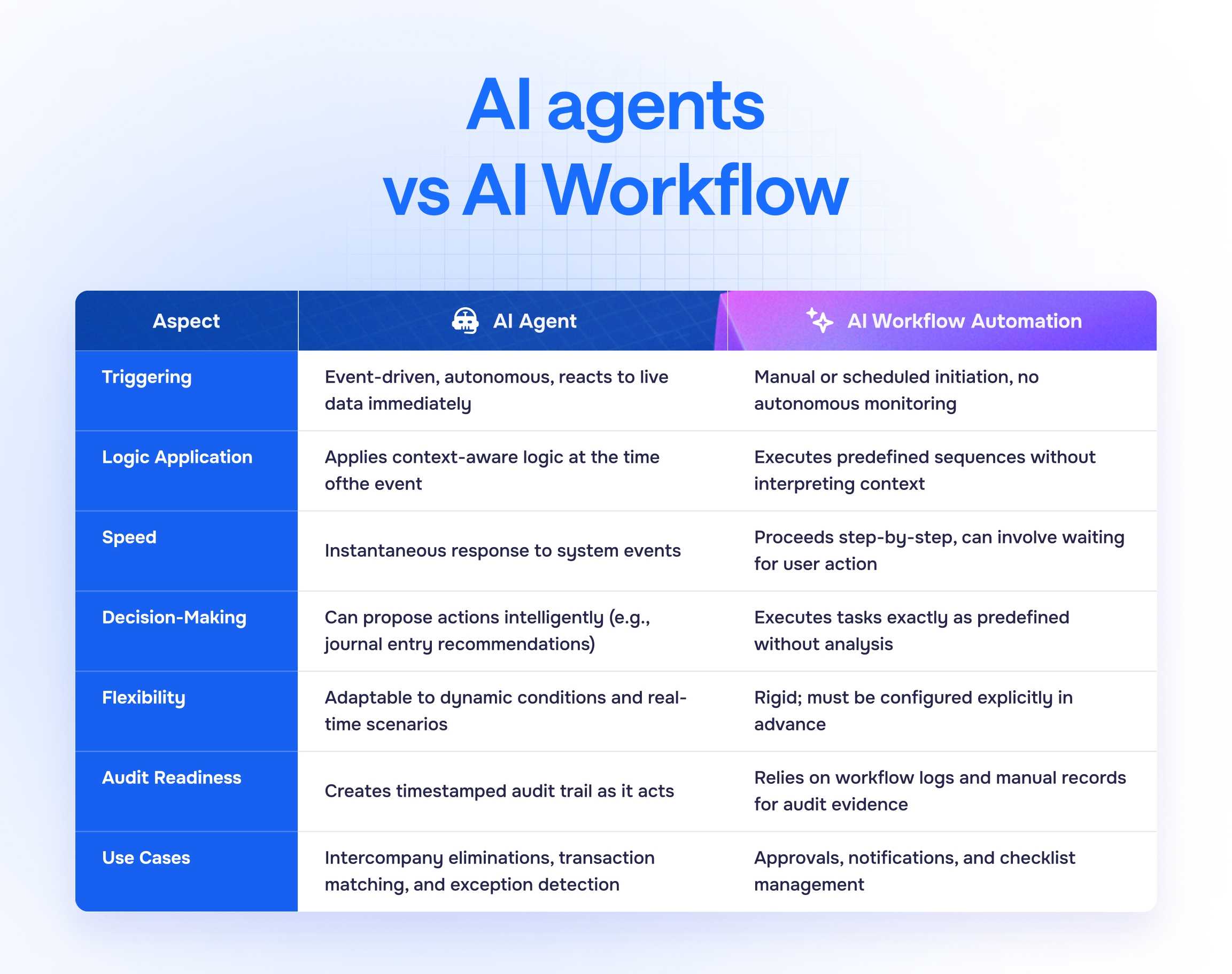
As artificial intelligence revolutionizes enterprise operations, executives face a critical decision between autonomous AI agents and orchestrated workflows. This strategic choice impacts organizational efficiency, scalability, and competitive advantage. Understanding the distinct capabilities, limitations, and use cases of each approach is essential for making informed decisions that align with business objectives and technological readiness.
Understanding AI Agents vs Orchestrated Workflows
A Comprehensive Framework for Enterprise AI Implementation Strategy
To build an effective enterprise AI strategy, organizations must first understand the fundamental distinction between AI agents and workflows. AI agents operate autonomously in dynamic environments, while workflows excel at automating predefined, rule-based sequences. This distinction shapes how companies can best deploy AI across their operations.
Understanding the Core Components
AI implementation strategies typically include:
- Automated workflows for routine, predictable tasks
- Autonomous agents for complex, dynamic scenarios
- Hybrid systems combining both approaches
- Integration layers connecting AI with existing systems
- Governance frameworks ensuring responsible AI use
Selecting the Right Automation Model
Choose workflows when you need:
- Consistent, repeatable processes
- Clear audit trails
- Predictable outcomes
- High-volume, routine tasks
Deploy AI agents when facing:
- Variable scenarios requiring judgment
- Complex decision-making needs
- Dynamic customer interactions
- Situations needing real-time adaptation
Business Use Cases and Applications
Common enterprise applications include:
- Customer Service: Agents handle complex inquiries while workflows process routine requests
- Finance: Workflows manage transactions while agents detect fraud patterns
- Supply Chain: Agents optimize routing while workflows handle order processing
- HR: Workflows manage onboarding while agents assist with recruitment
- IT Support: Agents troubleshoot issues while workflows handle password resets
Decision-Making Framework for Executives
When evaluating AI implementation options:
- Assess task complexity and variability
- Calculate potential ROI for each approach
- Consider existing system integration needs
- Evaluate security and compliance requirements
- Factor in staff training and change management
Building a Scalable Framework
To ensure scalability start with pilot projects in low-risk areas
- Document successful patterns and approaches
- Build reusable components and templates
- Create clear governance guidelines
- Establish metrics for measuring success
Hybrid Implementation Strategies
Most enterprises benefit from a hybrid approach where:
- Workflows handle structured, repetitive processes
- Agents manage complex, variable tasks
- Both systems share data and insights
- Integration layers enable seamless operation
- Monitoring tools track performance across both
By following this framework, organizations can build a foundation for successful AI implementation that balances automation efficiency with intelligent adaptation. This approach ensures scalability while maintaining control over AI systems as they grow more complex.
Conclusions
The choice between autonomous agents and orchestrated workflows isn’t binary – successful enterprises often implement hybrid approaches tailored to their specific needs. By understanding the strengths and limitations of each model, organizations can create robust, scalable AI automation strategies that drive business value while maintaining necessary control and oversight.